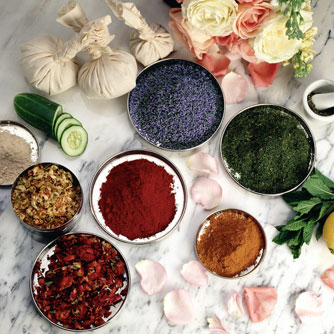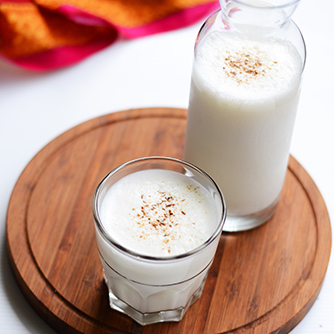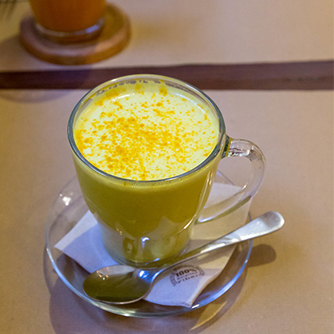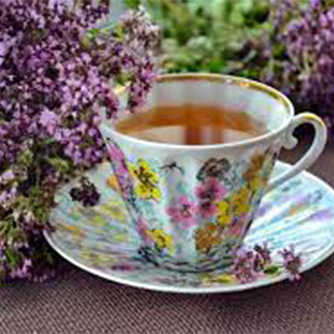
Maharishi Ayurveda is a refined understanding of the best Ayurvedic practices. Ayurveda is the world’s longest continually-practised medical science. Developed in India over 6,000 years ago, Ayurveda (which translates as “knowledge of life”), is a natural approach to creating balance and strengthening the body’s natural healing ability. Ayurveda is acknowledged by the World Health Organization and is growing in its global use as one of the most effective systems of natural health.
The sole purpose of these slides is to provide information about the tradition of Ayurveda. This information is not intended for use in the diagnosis, treatment, cure, or prevention of any disease. If you have any acute or chronic health concerns, please consult a trained health professional.

Ayurveda holds that disease is primarily the result of imbalances and impurities that accumulate in the body over time. The speciality of Ayurveda is in diagnosing imbalances at an early stage, before symptoms of disease arise, eliminating those imbalances from the body and teaching each person how to live a healthy, balanced life, according to their unique mind-body makeup.

Ayurveda was the first system of medicine to recognize the concept of individual mind-body types. It holds that everyone is born with their own natural balance which influences all aspects of their life, including body structure, emotional makeup, and predisposition to illnesses.
Body types are determined by the doshas. According to Ayurveda, nature’s elements—earth, water, fire, air, and ether—are present within the mind and body. These mind-body elements, or doshas, are Vata (air/ether), Pitta (fire/water), and Kapha (earth/water). The three doshas influence everything, from your body type to your digestion, disposition, sleep, and so much more. Knowing your dosha makes it easy to find the best foods, exercise, and lifestyle practices to support your unique needs.
Click here to take a quiz to determine your body type
https://mapi.com/pages/dosha-quiz-landing

Vata dosha is the Ayurvedic mind-body element associated with air. Vata governs bodily functions concerned with movement. Vata is especially involved in the movement of electrical activity up and down the nerves and therefore has a major function in the nervous system and brain. The flow of food through the digestive tract and circulatory system is also controlled by the function of Vata.
Vata in Balance
Vata out of Balance


Pitta dosha is the Ayurvedic mind-body element associated with fire and water. Pitta governs bodily functions concerned with heat, metabolism, and energy production. Pitta’s principal activities control the chemical transformation processes related to digestion and metabolism.
Pitta in Balance
Pitta out of Balance


Kapha dosha is the Ayurvedic mind-body element associated with earth and water. It is slow, moist, cool, oily, heavy, smooth, and steady and embodies structure, lubrication, and stability in the mind and body.
Kapha in Balance
Kapha out of Balance


This lassi recipe, when taken at lunch, helps reduce gas and bloating. It is best not to take a lassi with the evening meal.
Mix well with a hand mixer or blender.

Combine all ingredients in a glass jar and whisk until well combined. Pour into a glass until 3/4 full, and top the mixture with sparkling water.

Makes 1 cup of tea
1 cup hot water
2-4 teaspoons organic food-grade dried lavender buds
Bring water to a boil. Place lavender buds in a teapot or a sachet. Once the water has boiled, pour it over the lavender and steep it for about 10 minutes. Strain the lavender and pour it into your favourite mug to enjoy before bed.

sdf sjowursmcasdfjaworeuvmsd fadfasdfa
| Favor | Avoid | |
|---|---|---|
| Summary | Favor warm, heavy, unctuous, and oily foods, warm food and drinks. Favor sweet, sour, and salty tastes. | Avoid light and dry food; avoid cold food and drinks; minimize pungent, bitter, and astringent tastes. |
| Grains | Wheat products, rice (basmati, jasmine, and heavy, sweet rice are all good), cooked oat flakes. | Barley, corn, millet, rye, buckwheat, and raw oats (all harder to digest for delicate Vatas). |
| Pulses | Soup of mung beans, split whole mung beans, red lentils, yellow mung dhal (pulses can be soaked overnight for faster cooking). | Pulses, with the exception of the easy- to-digest ones listed to the left. |
| Dairy | All dairy products. Cheese should be soft and fresh (paneer, cottage cheese, fresh mozzarella, and cream cheese are all examples of easy-to-digest, lightly-aged cheeses). | |
| Sweeteners | All sugar cane products such as unprocessed white rock sugar/natural candy sugar, raw cane sugar, molasses, maple syrup, and raw, unheated honey. | Heated pasteurized honey. Foods with honey cooked in them |
| Oils | All (ghee is especially recommended for cooking). | |
| Nuts & Seeds | All nuts, except peanuts; seeds in small amounts. | Peanuts |
| Spices and Condiments | Cumin, ginger, mustard seeds, fenugreek, asafoetida, cinnamon, cardamom, cloves, anise, fennel, black pepper (small amounts), salt, lemon juice, tamarind (Asian fruit) | |
| Vegetables | Asparagus, beets, cabbage (cooked), cucumber, fennel, garlic, green beans, green chilies, leeks, okra, olives, black, parsnip, peas (cooked), potatoes (sweet), pumpkin, radishes (cooked), rutabaga, spaghetti squash, spinach, zucchini | Artichoke, bitter melon, broccoli, brussel sprouts, burdock root, cabbage (raw), cauliflower (raw), celery, corn, eggplant, kale, olives, green, onions (raw), peppers, sweet & hot, potatoes (white), radish (raw) |
| Fruits | Ripe, sweet, and juicy fruits: apricots, avocado, bananas, berries, cherries, dates (fresh), figs (fresh), grapefruit, grapes, kiwi, lemons, limes, mangoes, melon, oranges, papaya, peaches, pineapple, plums, prunes (soaked), raisins (soaked), rhubarb, strawberries | Unripe, dry, sour fruits: apples (raw), dates (dry), figs (dry), pears, pomegranate, raisins (dry), prunes (dry), watermelon |
| Favor | Avoid | |
|---|---|---|
| Summary | Favor cooling, hearty fare that’s not too hot, oily, or spicy. Favor sweet, bitter, and astringent tastes. | Avoid pungent, sour, and salty tastes. |
| Grains | Wheat, rice, barley, millet, corn, oats | buckwheat, rye |
| Pulses | Mung beans (soup, split whole mung beans, yellow mung dhal), green pea, common kidney beans, adzuki beans, and soybean products | |
| Dairy | Ghee (clarified butter), milk, butter, sweet buttermilk, lassi (yoghurt and water drink — not sour), cream, cream cheese | Sour milk products, yoghurt, sour lassi, cheese (especially old and salty), salty butter, quark, sour cream |
| Sweeteners | Sugar cane products (unprocessed white rock sugar/natural candy sugar is best; raw cane sugar, unrefined brown sugar), maple syrup, honey (but not during fever or hot weather) | Avoid molasses, 'brown' sugar (made from refined white sugar) |
| Oils | Ghee, coconut, olive | Almond, corn, safflower, sesame, sunflower |
| Nuts | All nuts except mature coconut seeds | |
| Spices | Coriander, cumin, ginger (small amounts), turmeric, saffron, fennel, cinnamon, cloves, cardamom, lemon juice (not on empty stomach) | Chili pepper, cayenne, black pepper, mustard seeds, celery seeds, fenugreek, sea salt |
| Vegetables | Asparagus, broccoli, brussels sprouts, cabbage, carrots (cooked), cauliflower, celery, cucumber, green beans, kale, leafy greens, leeks (cooked), lettuce, okra, olives (black), onions (cooked), parsley, parsnips, peans, peppers (sweet), potatoes (sweet & white) | Avoid beets (raw), daikon radish, garlic, green chilies, horseradish, leeks (raw), mustard greens, olives (green), onion (raw), peppers (hot), radishes (raw), tomatoes, turnips |
| Fruits | Apples (sweet), apricots (sweet), avocado, berries (sweet), cherries (sweet), coconut, dates, fig, grapes (red & purple), mangoes, melons, oranges (sweet), pears, pineapple (sweet), pomegranates, prunes, raisins, watermelon | Apples (sour), apricots (sour), bananas, berries (sour), cherries (sour), cranberries, grapefruit, grapes (green), lemons, mangoes (green), oranges (sour), peaches, persimmons, pineapple (sour), plums (sour), rhubarb, strawberries |
| Favor | Avoid | |
|---|---|---|
| Summary | Favor lighter diet; dry, warm food and warm drinks; pungent, bitter, and astringent tastes. | Avoid large quantities of food, especially at night; avoid unctuous, cold, heavy food; minimize sweet, sour, and salty tastes. |
| Grains | Old grains (minimum one year), barley, millet, corn, buckwheat, rye, oats, wheat, rice (good quality, like basmati rice) | New grains, especially wheat and rice |
| Pulses | All, except tofu and black gram | Tofu (soybeans), black gram |
| Dairy | Lassi (yoghurt and water drink — preferably made thin), buttermilk, low-fat milk; small amount of ghee | cheese, whole milk |
| Sweeteners | Honey, old jaggery (caramelized sugar cane syrup) | Avoid sugar cane products (except old jaggery) |
| Oils | Ghee (for cooking), mustard, sunflower, corn, olive (all, especially ghee, in small amounts) | |
| Nuts & Seeds | Sunflower and pumpkin seeds | Avoid all nuts |
| Spices and Condiments | All spices, except salt, especially pungent and sharp spices (pepper, ginger, etc.), lemon juice | Avoid salt |
| Vegetables | Artichoke, asparagus, beets, broccoli, brussels sprouts, cabbage, carrots, celery, corn, daikon radish, eggplant, garlic, green beans, green chilies, horseradish, kale, leafy greens, leeks, lettuce, mustard greens, okra, onions | Avoid olives (green & black), potatoes (sweet), squash (winter), tomatoes (raw), zucchini |
| Fruits | Apples, applesauce, apricots, berries, cherries, cranberries, figs (dry), peaches, pears, persimmons, pomegranate, prunes, raisins, strawberries | Avoid avocado, banana, coconut, dates, figs (fresh), grapefruit, kiwi, melons, oranges, papaya, pineapple, plums, rhubarb, watermelon |
